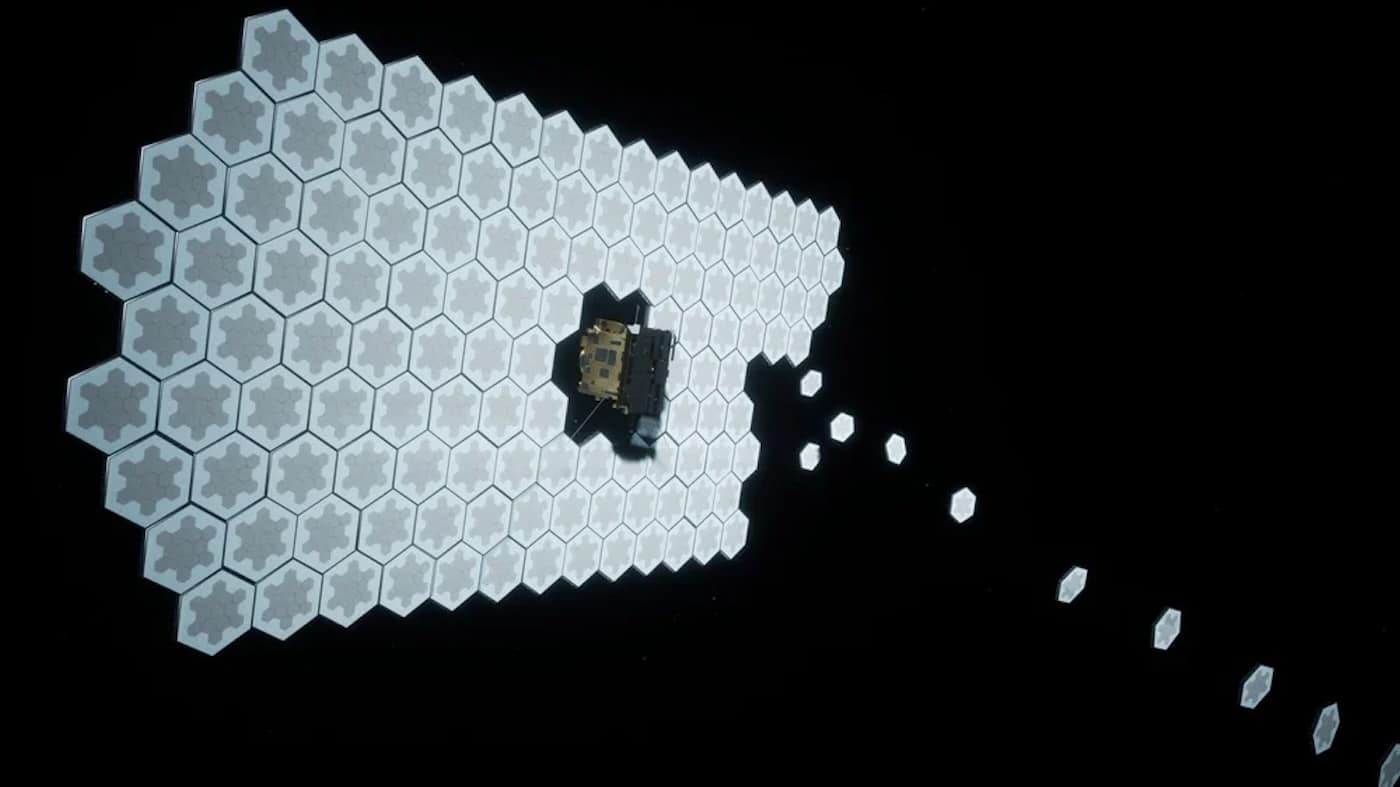The idea sounds like science fiction, but it’s starting to take shape: self-assembling data centers in space. The startup Starcloud —which plans to launch an NVIDIA H100 GPU aboard— and Rendezvous Robotics —a MIT spin-off— have signed a collaboration to build autonomous, orbiting infrastructure at unprecedented scales. The declared goal is monumental: a 5-gigawatt “hyper–data center” with solar panels and radiators spanning ~4×4 kilometers. In response to the announcement, Elon Musk indicated that “SpaceX will do it with Starlink V3 satellites”, aiming for 1 Tb/s per unit. The AI boom has turned energy and computing capacity into the new gold; and low Earth orbit is positioned as the next frontier.
What’s been announced (and why it matters)
- Starcloud aims to start with an “AI-ready” satellite and then scale to a modular, self-assembling architecture that reduces construction costs and dependency on robotic arms or crewed operations.
- Rendezvous Robotics leverages its “tile” technology (flat modules with batteries, processing, magnetic docking, and control), based on TESSERAE developed by the MIT Media Lab, tested in suborbital campaigns and on the ISS, with a new demo planned for 2026.
- Ambitious scaling: reaching 5 GW in orbit would require gigantic structures (solar collectors and large radiators) that are impossible to fold into a payload; hence, the need for in-situ autonomous assembly.
- SpaceX suggests that Starlink V3 could integrate large-scale orbiting computation with terabits per second capacity per satellite, speeding up an orbital edge.
How it would work: mosaics that “build themselves” in microgravity
Rendezvous proposes “tile” modules that travel stacked inside the rocket; once released, they deploy, meet, and dock using electromagnets and autonomous guidance. The TESSERAE concept allows for large, reconfigurable, and repairable formations, which is crucial when dealing with square kilometers of capture and dissipation panels. Compared to traditional approaches (astronaut with tools, robotic arms, or extremely complex mechanical origami), the autonomous swarm targets scalability and resilience.
Why now: AI’s pressure on energy, land, and cooling
The expansion of AI data centers on Earth hits three limits:
- Energy: gigawatts needed for training and inference clusters at scale.
- Cooling and water: every watt consumed generates heat.
- Land and environmental impact: permits, locations, and carbon footprint.
In orbit, solar energy is abundant and continuous (“a free fusion reactor,” according to its promoters); there’s no land scarcity, and dissipation occurs via thermal radiation (not convection), with dimensionable radiators. Launch costs have fallen, autonomous assembly nears maturity, and inter-satellite optical links enable high-capacity networks. The missing piece is big construction without humans or complex robots: precisely the niche Rendezvous aims to fill.
The plan (according to Starcloud and Rendezvous)
- Demonstration phase: satellite with H100 GPU to test power, thermal, and communication.
- Modular platforms: “tiles” with power, compute, storage, and communications that self-assemble into larger structures (antennas/radiators/panels).
- Scaling up: evolve toward megaplatforms (the “5 GW”) with continuous assembly, self-repair, and reconfiguration.
The real challenges: obstacles that separate plans from reality
- Thermal management: a H100 dissipates hundreds of watts; at hyperscale levels, we’re talking about megawatts that must be evacuated via large radiators (space is a vacuum: no air to carry heat). Proper sizing, soiling, and radiation degradation are critical issues.
- Energy and storage: GW of solar implies kilometers of panels (for assembly and maintenance) plus batteries or other storage for eclipses.
- Radiation hardening: high-performance electronics that are not hardened suffer in radiation-heavy environments; shielding or favorable orbits are necessary, impacting mass and cost.
- Latency and backhaul: even in LEO, latency to Earth and total bandwidth must match use cases (training vs inference). Optical inter-satellite links and terrestrial teleports are essential.
- Operations and space debris: thousands of modules self-assembling require collision avoidance, fail-safe mechanisms, and a end-of-life plan to avoid worsening orbital traffic.
- Regulation and security: export controls (chips), frequencies, international responsibility (Space Treaty), insurance, and cybersecurity for critical infrastructure… in orbit.
- Per-unit economics: even as launch costs decrease, the €/W installed (panels, radiators, hardened compute) and €/bit of backhaul must compete with terrestrial alternatives (including submarines or buried cables).
What would SpaceX contribute?
Musk’s comments suggest that Starlink V3 could add compute capabilities per satellite (an orbital edge) with 1 Tb/s per unit and inter-satellite lasers serving as the backbone. This would enable distributed services (caching, inference, preprocessing) without immediately building a monolithic “hyper–data center”. Vertical integration (launcher + constellation + optical links + terminals) offers a clear advantage. The key unknowns are power availability per satellite, thermal control, and use case scenarios (CDN? lightweight AI inference?).
Who benefits if it works?
- Governments and defense: secure communications, reconfigurable antennas, processing close to sensors.
- Telecoms and cloud providers: orbital edge for global coverage and failover with low latency.
- Science and observation: processing at origin for astronomy and EO; fewer raw data sent to Earth.
- Businesses: redundancy and demand-based capacity for peak computations… if consumption model and latency align.
A realistic timeline
In the near term, expect specific demos (GPU in orbit, assembly tests, and microgrids between modules). By 2026, Rendezvous plans its third demo (fifth generation) at the ISS; thereafter, medium-sized platforms (antennas/radiators) could become the initial market. An orbital “5 GW” system is not for tomorrow: it’s a decade-long goal, assuming technology and economics advance… and regulators agree.
Takeaway: AI has pushed terrestrial power and cooling to their limits; space offers an infinite canvas, but governed by physics and regulations. Autonomous in-orbit assembly might be the key — the question is whether it will balance the books.
via: rdvrobotics

